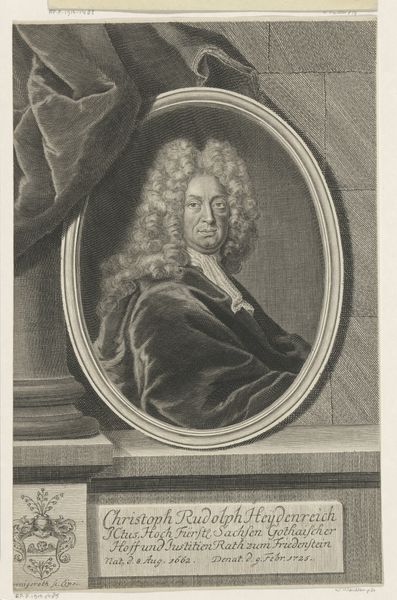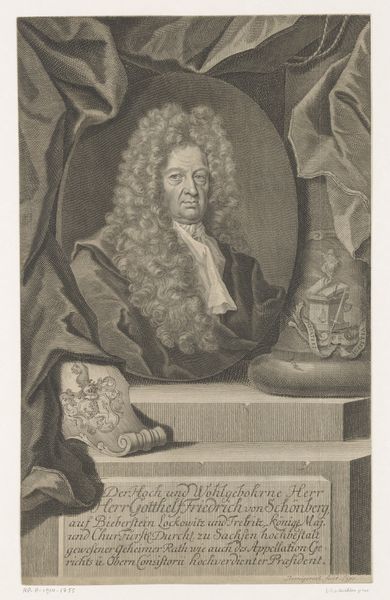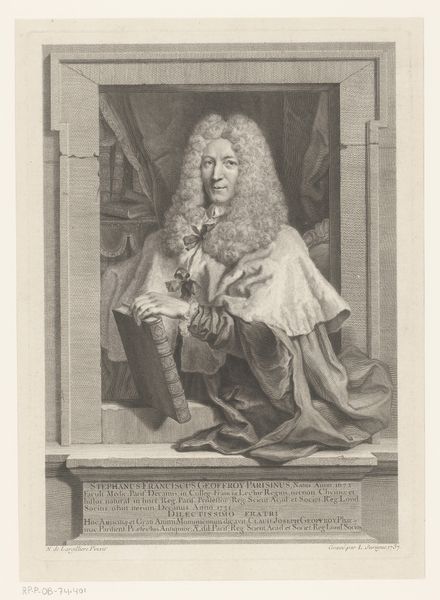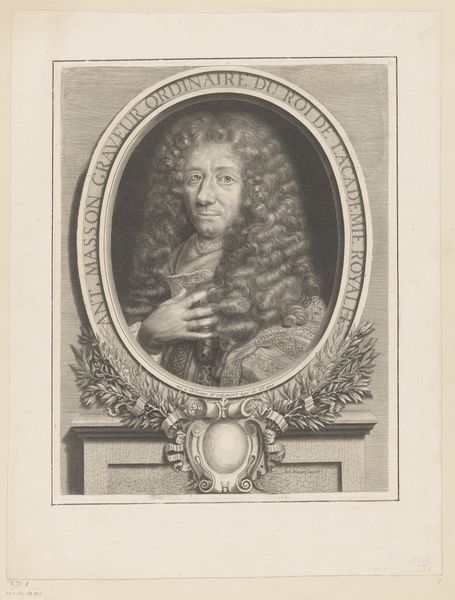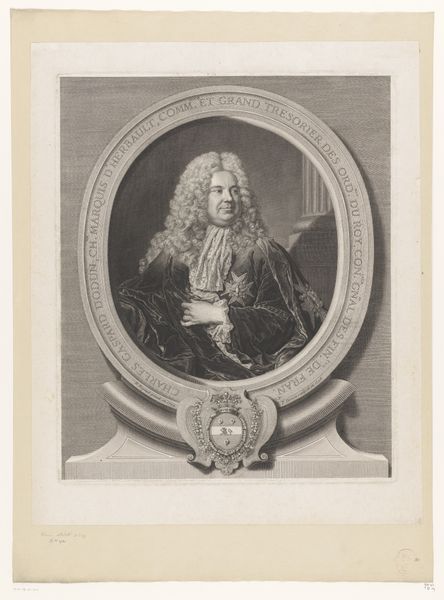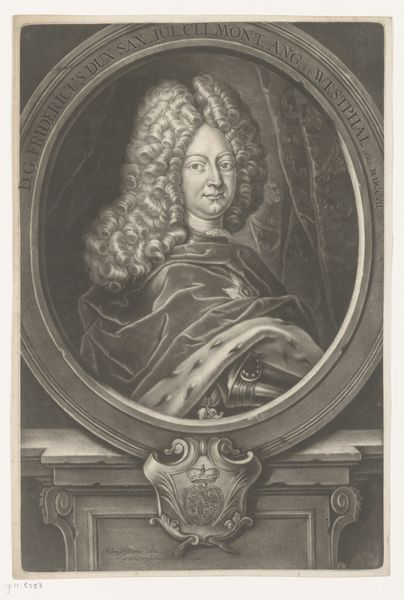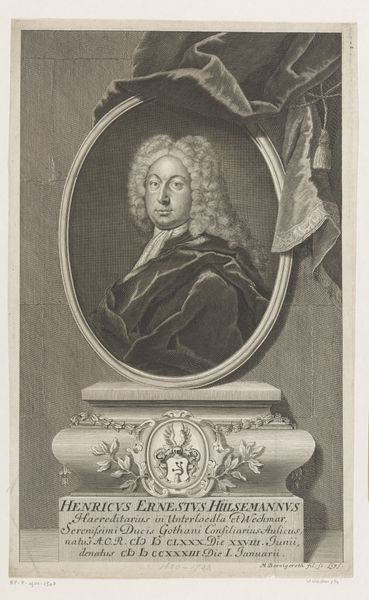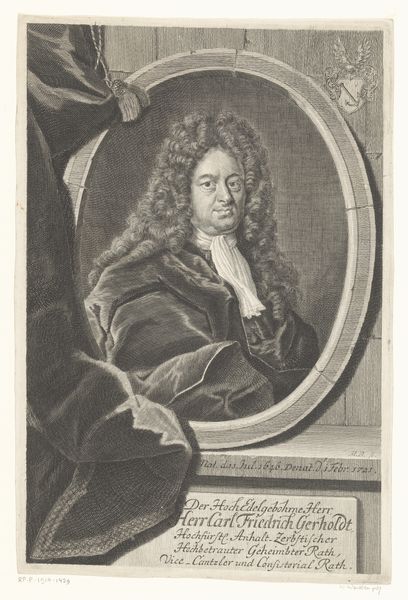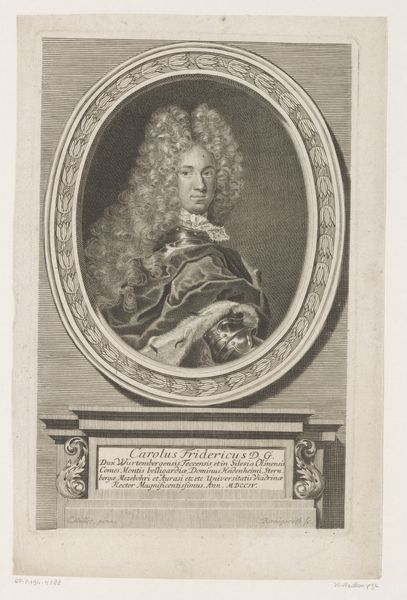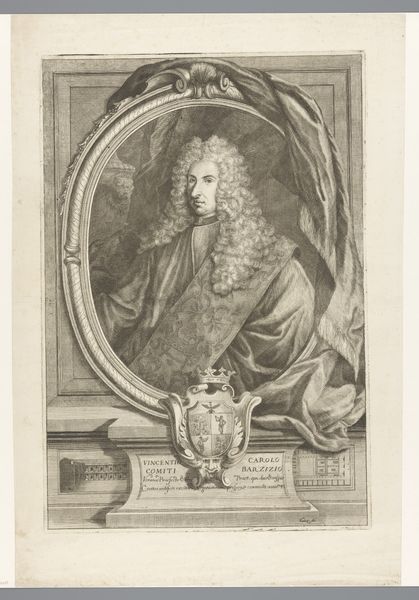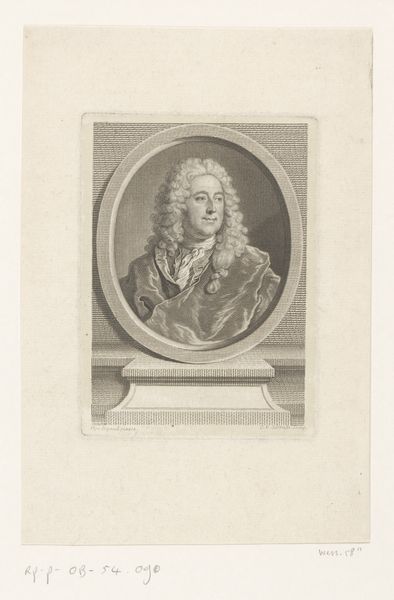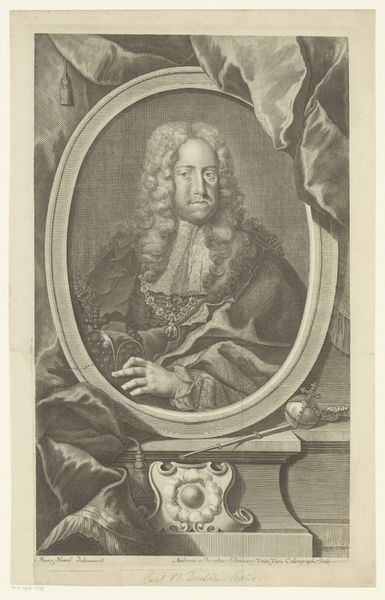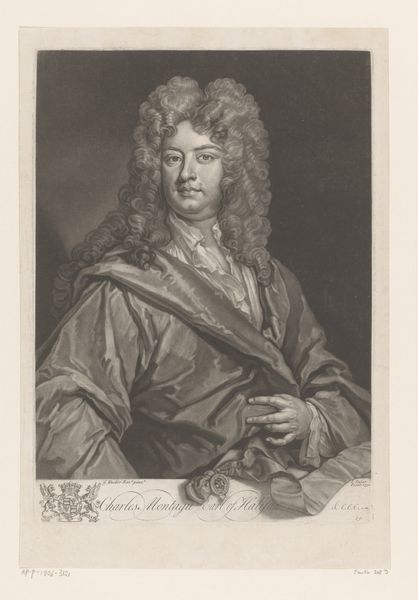
engraving
#
portrait
#
baroque
#
line
#
academic-art
#
engraving
#
realism
Dimensions: height 298 mm, width 189 mm
Copyright: Rijks Museum: Open Domain
Curator: This image presents an engraving from between 1699 and 1733, titled "Portret van Johann Andreas Schmidt" by Martin Bernigeroth. Editor: What a study in contrasts! It's both incredibly ornate and remarkably reserved. The figure seems almost burdened by the weight of the decorative elements surrounding him. Curator: The engraving, rendered in stark lines, uses a relatively limited range of tones to define textures and volume. The academic robes and the elaborate wig denote Schmidt's status. Engravings like this were reproduced and consumed widely. Editor: It's interesting to think about this portrait not as a unique artistic creation, but as part of a larger system of image production and consumption. What does it tell us about the market for images in that era? What type of patrons consumed images of this sort, and for what purposes? I’m also wondering about the material substrate - the kind of paper used here - as well as the inks and other stuff used to make it. I can feel myself start going down a wormhole. Curator: Indeed. Bernigeroth was making something for sale. Notice the incredible detail: you can see how the engraver meticulously built up the image line by line, modulating the depth and intensity of each cut to create the illusion of depth. Look at the subtle shadowing around the face compared with the starkness of the wig, it’s wonderful, no? It’s not just about representing Schmidt, but also about demonstrating Bernigeroth's skill. Editor: You're right. It’s technical prowess as commodity. Knowing that, and thinking about the labor behind such an intricate work transforms it in my eye from a stuffy, imposing portrait into a fascinating document of early modern artisanal craft. I also find it very beautiful! The baroque detailing really enhances that visual quality. Curator: It certainly encourages a renewed appreciation of both the technical labor and the economic imperatives embedded in these historical artifacts. Editor: Well, I see this piece differently now, thanks to your insights. I was too busy getting a gloomy emotional vibe.
Comments
No comments
Be the first to comment and join the conversation on the ultimate creative platform.

